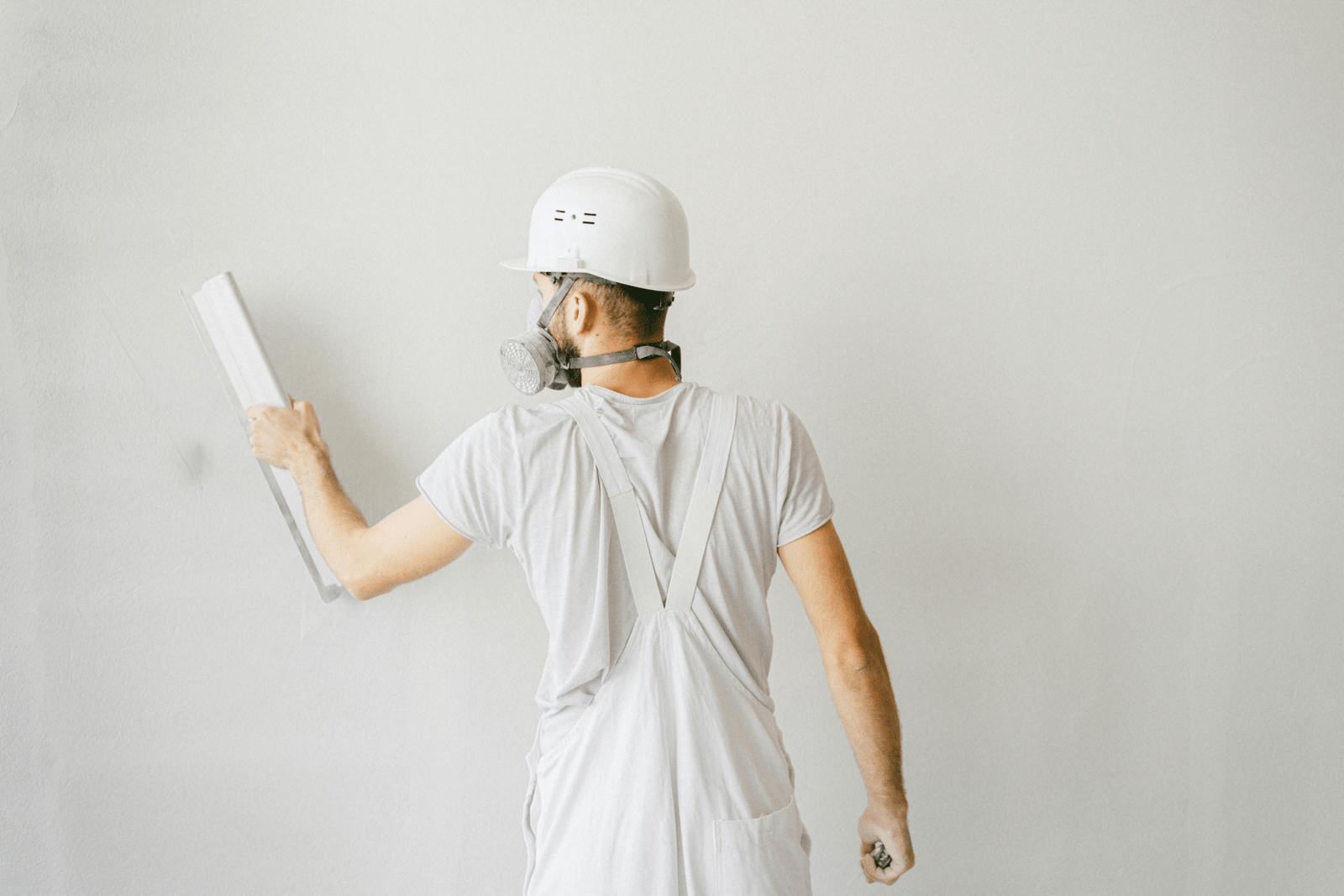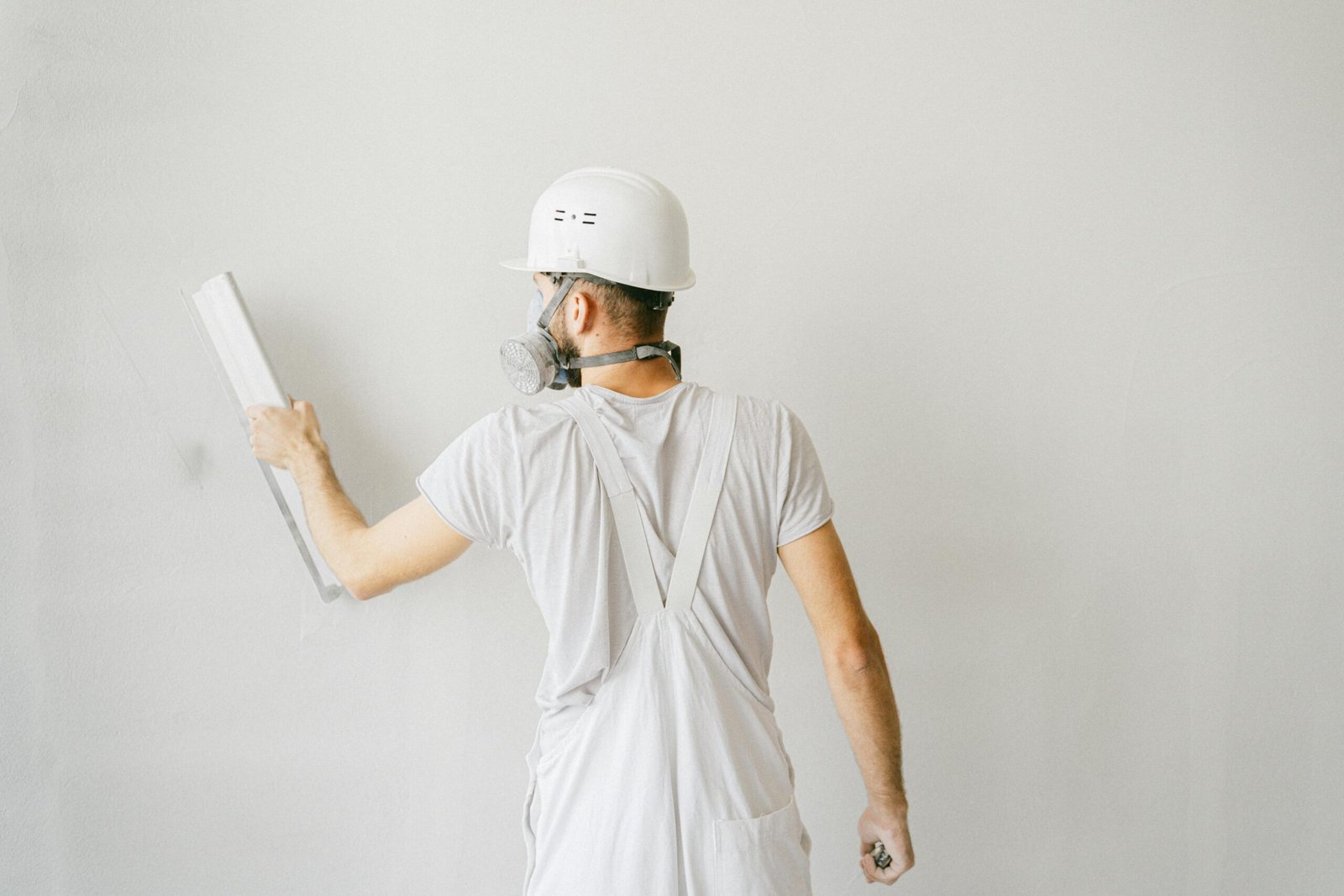Paint peels off wall because moisture, poor prep, or product mismatch breaks adhesion and the paint lets go. You see bubbles, flakes, or sheets that drop off. That look hurts curb appeal and can hint at hidden issues. When you understand the causes, you protect value and reduce hassle. Many people notice problems during home renovation projects, when fresh color meets older layers.
You want crisp lines and smooth walls that last. Boise weather, busy rooms, and daily wear challenge even good coatings. The following nine causes explain where failure starts and why it spreads.
1. Moisture Infiltration Behind Walls
Water is the top driver of paint peeling inside and out. Tiny roof gaps, slow plumbing leaks, or damp basements push moisture into wall cavities. That pressure lifts the film and breaks the bond. You may notice staining, soft drywall, or a musty smell first. Full drying matters before any new finish goes on.
Hidden moisture often acts slowly, then failure appears fast. Bathrooms, laundry rooms, and rooms near unsealed windows suffer more. Better airflow cuts humidity damage and limits moisture intrusion. That small change helps facelift your home with fewer surprises and stronger results. Living rooms and bedrooms benefit from quality interior painting that holds up to daily life.
2. Poor Surface Preparation
Paint bonds best to clean, sound surfaces. Dust, grease, and soap film block adhesion right away. Glossy sheens also resist bonding when left unsanded. If old layers chalk or crumble, the new coat follows them off.
Quick touchups can miss vital steps and create weak spots. Small skips lead to early lifting and spreading flakes. Surface contaminants make that worse over time. Improper priming and sanding errors then speed up failure in busy areas.
3. Using the Wrong Paint Type
Some products do not work together. Latex over old oil can slide rather than stick. That mismatch causes adhesive failure after a few months. You may spot curling edges or fast chipping in the first season.
The latex vs. oil choice matters on trim, doors, and cabinets. Those surfaces see hands, heat, and frequent cleaning. Old layers are not always clear, which invites compatibility issues. When systems clash, early failure follows even with careful work. Cabinet doors and panels benefit from durable cabinet painting that suits daily use and frequent cleaning.
4. High Humidity During Painting
High moisture in the air slows drying and weakens the film. Bathrooms and basements are common problem zones. Trapped vapor forms blisters that later burst. Those bubbles turn into flakes with normal wear.
Ambient humidity also shifts dry times from room to room. Condensation on cool walls hurts adhesion during cure. Drying delays leave the surface soft at the start. Later, that softness shows up as peeling around seams.

5. Water Leaks or Flood Damage
Chronic leaks saturate walls for weeks or longer. That exposure breaks coatings from the back side. Discoloration or a mildew smell often comes first. Those are early flags of water damage and deeper issues.
Flooded basements, unsealed foundations, and deck connections are common sources. So are failing window flashings outside. Structural moisture does not forgive any film. Without solid waterproofing, fresh layers will not stay put for long.
6. Low-Quality Paint Products
Budget paint looks fine on day one. Months later, the story changes. Thin binders and low pigment density wear down fast. The surface chalks, cracks, and then lifts. Short paint lifespan means repainting sooner than planned.
Here is what matters when you compare products:
- Strong hide and durability claims stand up to Boise’s mix of sun and cold.
- Binder quality affects scuff resistance and washability over time.
- Manufacturer guidance should match your surface and room conditions.
- Warranties signal confidence, not just color range and sheen.
Cheap options often bring budget paint risks at the worst time. Seasonal shifts, wind, and dust test weak films. Quality products hold color and resist peeling longer.
7. Skipping Primer Application
Primer does heavy lifting you do not see. It bridges the surface and the topcoat for better grip. On patched drywall, raw wood, or stained spots, it is vital. Without it, absorbent areas pull binder from the finish. That creates uneven cure and early release.
A good undercoating also evens texture and locks in small stains. High wall absorbency steals strength from thin coats. Strong first-layer adhesion gives your color a solid base. That base keeps edges tight and reduces future flaking.
8. Extreme Temperature Fluctuations
Exterior walls and uninsulated areas face wide swings. That movement stresses coatings day after day. Over time, the bond weakens and starts to lift. Garages, sheds, and south-facing trim show the damage first.
- Thermal stress strains films as materials expand and contract. Small cracks form and widen with each season. The edges then curl and lose grip.
- Weather exposure adds UV and wind to the mix. UV hardens paint and makes it brittle. Dust and grit act like sandpaper.
- Seasonal damage stacks year after year. Tiny defects spread across joints and boards. Clusters of failure then appear in patches.
For siding and trim under the Idaho sun, durable exterior painting helps resist those swings and keeps color steady.
9. Paint Applied to Damp or Wet Walls
Walls can look dry and still hold hidden moisture. Painting over that dampness traps vapor inside the film. Soon you see bubbles and peeling paint near seams and fasteners. Those paint bubbles pop and shed flakes in sheets.
Cool basements, recent repairs, and shaded exteriors stay damp longer. Wall moisture hides behind dense drywall and tile backers. Accurate moisture testing prevents guesswork and delays. Many people discover this during Home renovation projects, when schedules run tight and rooms need to reopen.
Frequently Asked Questions
Why does paint peel off in bathrooms or kitchens more?
Steam and cooking raise humidity every day. That drives frequent condensation. The film swells, dries, and then breaks. Consistent control reduces that cycle.
Can peeling paint indicate a more serious problem like mold?
Yes, it can point to hidden leaks or damp cavities. Persistent moisture supports mildew growth. That can damage drywall and insulation. A deeper check spots the source.
How do I stop paint from peeling again after repainting?
Lasting results come from fixing the root cause. Moisture and prep matter most. Reliable systems then hold up longer. Shortcuts invite a repeat cycle.
What kind of primer should I use to avoid peeling paint?
Some surfaces respond to bonding primers. Others need stain blockers or oil-based options. The surface and condition set the choice. Matching them limits future failure.
Is peeling paint a health hazard?
Older layers may contain lead in historic homes. Flakes and dust can pose risks indoors. Children and pets face higher exposure. Testing and safe handling protect everyone.
Final Thoughts
Paint peeling off wall does not happen at random. It follows patterns tied to moisture, prep, and product fit. When those align, finishes last longer and look better. If problems return, a deeper issue likely drives the failure.
You want smooth walls and steady color through every season. You also want clear updates and tidy sites from start to finish. That is how you Facelift your home without stress or surprise repairs. For friendly, professional help in Boise and nearby, contact Funky Painting: call 208-972-0565, email info@funkypainting.com, or visit 704 N Heliopolis Way, Star, ID 83669. Hours: M–F, 8am–5pm.





